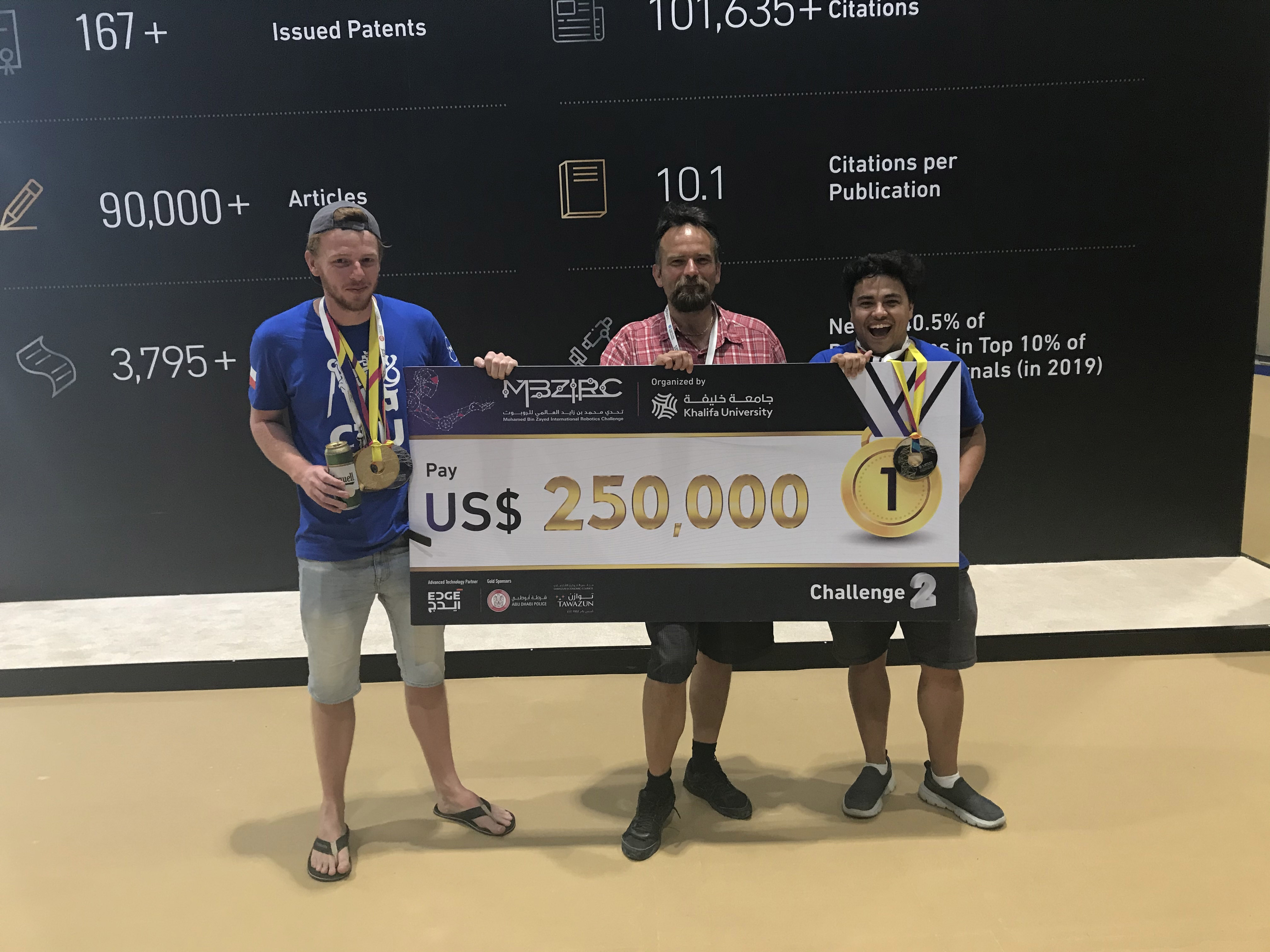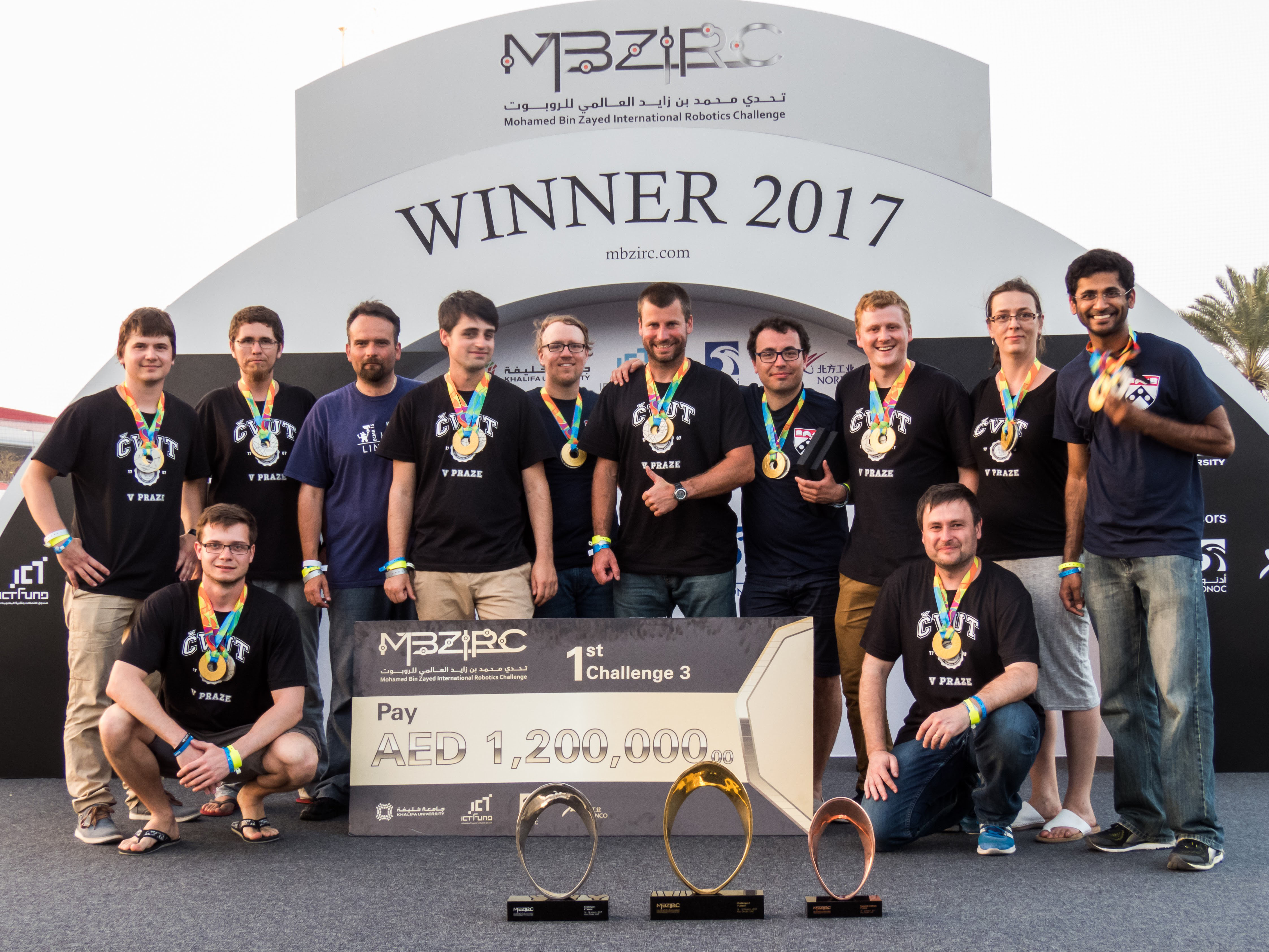DARPA 2020

In the second round of the Subterranean Challenge (SubT), held at the site of the remains of an unfinished nuclear power plant close to Seattle, Washington, we, once again, had to use our platforms and knowledge to locate things. This time, we were tasked with finding ventilation shafts and rooms with leaking gas, representing CO2. Other problems that we faced compared to the original competition were stair climbing, changing floors, but also things like the integration of multiple robots. The space itself was more branched and thus required more scouting not only in depth but also in width. Our position on the tournament table, just like the teams that were ahead of us, remained unchanged. However, the difference between the final score points of every team was lower. We, as part of the team CTU-CRAS-NORLAB, scored 10 points, the second team (Explorer) scored 11 points, and the first (CoSTAR) scored 16 points. Once again, we finished as the best self-funded team.
MBZIRC 2020

Our scientists from the laboratory have participated in the most prestigious international robotics competition MBZIRC 2020 together with their colleagues from the Laboratory of Multirobotic Systems at the Department of Cybernetics and colleagues from the American Universities NYU and UPENN. Among tough competition from teams all around the world, we proved that we belong amongst the best in the field. The competition consisted of three disciplines – ball catching, wall building, and putting out a building on fire. In the discipline of autonomous wall building, we won the gold medal, in ball catching, we won silver, and our most important victory was in the main discipline which combined all three previously mentioned disciplines.
DARPA 2019

Our group participated in the Subterranean Challenge (SubT) competition organized by the American research agency DARPA. In the first round of the competition, the task was to search a large coal mine using only robots. The goal was to find several specific items, like mobile phones, fire extinguishers, tools, or mannequins representing survivors of the catastrophe, and then subsequently the robots had to report the object position with a precision tolerance of 5 meters, many kilometers underground. The problems we faced were the limited communication underground, the localization of the robots, autonomous navigation, and the searching and identification of the objects. We finished in 3rd place overall with 10 points behind a team which had been training in the very same mines for several years prior (Explorer, 25 points) and behind giants such as NASA(JPL), MIT, Caltech, and KAIST (CoSTAR, 11 points). However, we were the best self-funded team which had paid for their whole participation in the competition themselves. The second self-funded team, NCTU, ended up at the 7th place with 2 points.
MBZIRC 2017

.png)